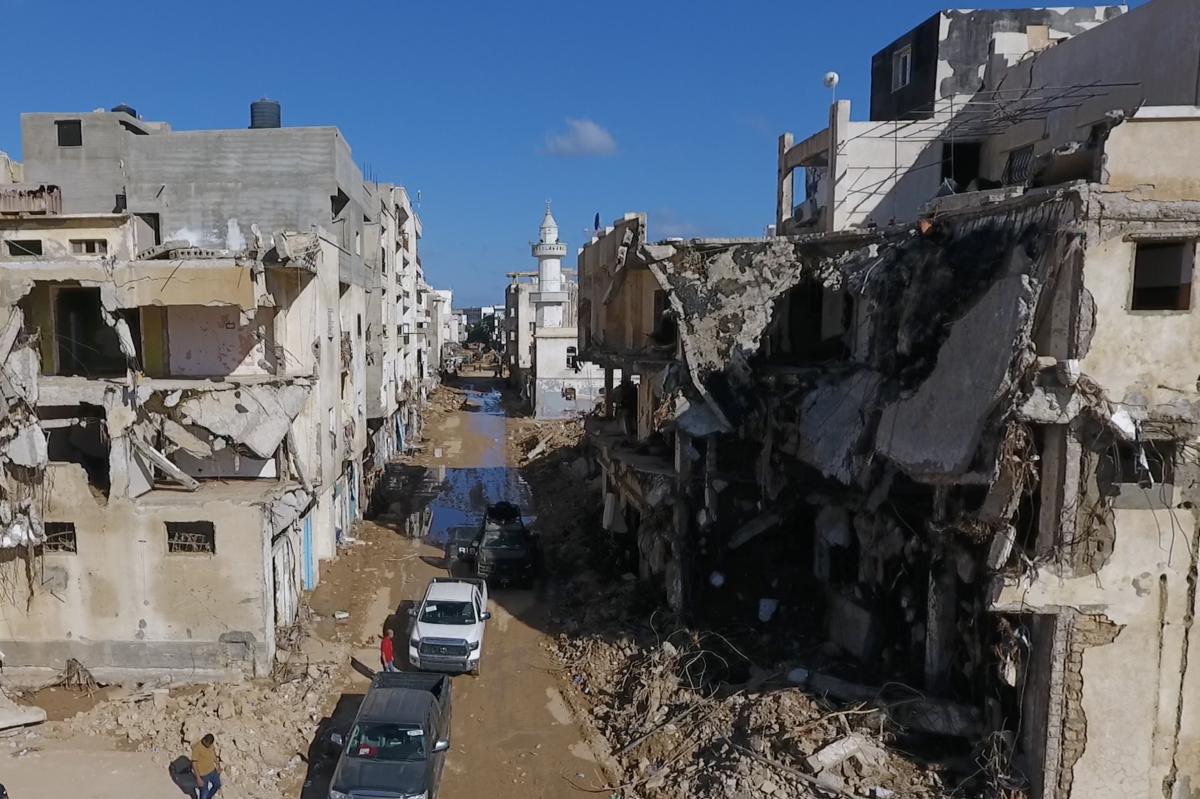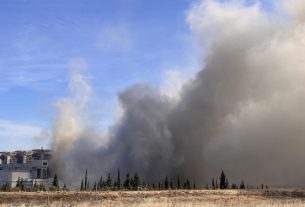Locals walking among destroyed houses in the Derna area. The Mansour and Derna dam collapses released an estimated 30 million cubic metres of water, causing rapid flooding downstream.
©IFRC
On 10 September, torrential rainfall resulting from Mediterranean Storm Daniel made its impact across northeastern Libya. Thousands of people have lost their lives and many more are still missing. From the beginning, the EU has provided emergency assistance through the Civil Protection Mechanism and its humanitarian funding.
The torrential rainfall caused the collapse of 2 dams close to the coastal city of Derna. Flood water swept away entire neighbourhoods and damaged critical infrastructure, including bridges, roads, and communication networks.
According to the World Health Organization, over 4,000 people died in the floods and around 8,500 are still missing. Floods also displaced dozens of thousands of people while assessments are still ongoing.
The first days in the immediate aftermath of any major disaster are crucial for search and rescue operations, as there are chances to find people still alive trapped under debris.
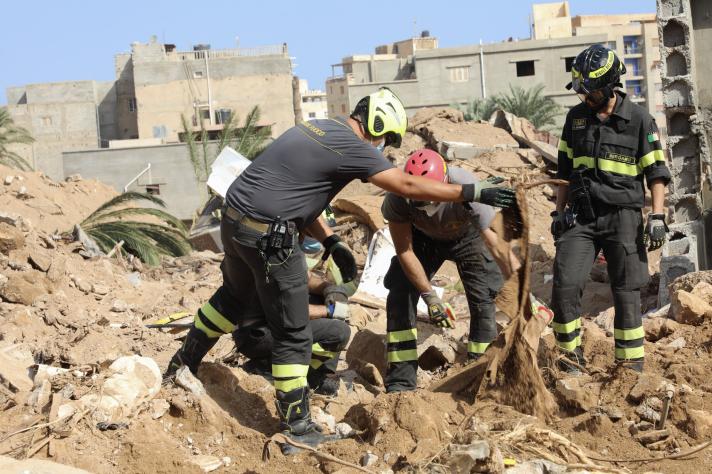
Italian firefighters inspecting flood affected areas. Search and rescue operations have been challenged by access constraints as flood water destroyed or severely damaged roads, bridges and other infrastructure.
© European Union 2023
This is also a critical time window to address the urgent needs of the affected population such as shelter, vital medical supplies and hygiene kits.
In response to a request for international assistance, the EU Civil Protection Mechanism was activated on 12 September to provide support to Libya.

People affected by floods approaching a Civil Protection point. According to the World Health Organisation (WHO) estimates, between 30,000 and 35,000 people displaced by the floods are currently residing in camps and settlements in Derna governorate.
© European Union 2023
Immediately after, several EU countries offered substantial assistance through the Civil Protection Mechanism. To date, 10 Member States stepped up to the challenge.
The EU also deployed a humanitarian expert to assess people’s needs beyond the city of Derna as well as environmental experts to be associated with the United Nations Disaster Assessment and Coordination (UNDAC) team operating on the ground.

Loading operations of the San Marco ship carrying Italian assistance. The prompt support offered by Italy included zodiac boats, hydro pumps, search and rescue helicopters, tents, blankets, and other vital aid.
© European Union 2023
The assistance offered by Member States includes medical teams, shelter items, heavy machinery, rubble removal trucks, search and rescue helicopters, technical experts, and other vital support.
Despite access challenges, the aid reached the most severely affected areas, in close coordination with the authorities.
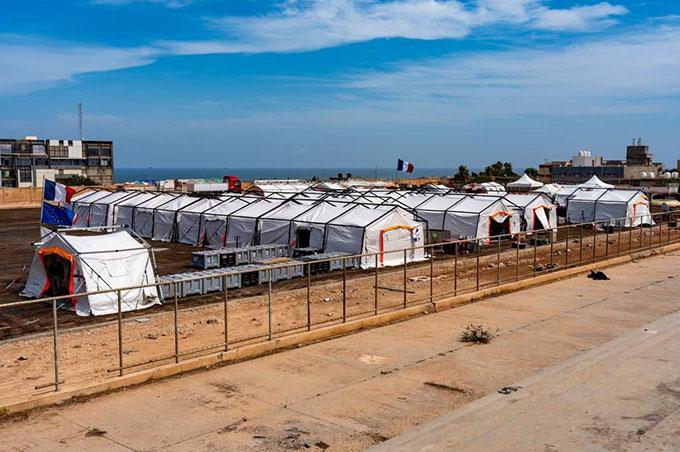
Camp hospital offered by France hosting a medical team of 53 people for urgent assistance to the injured. Once it became operative, the hospital welcomed up to 100 patients a day which received immediate health care.
© Sécurité Civile Française
To complement the assistance, on 14 September, the EU released a first emergency allocation of €500,000 in humanitarian funding to tackle the most urgent needs of people affected by the impact of Storm Daniel.
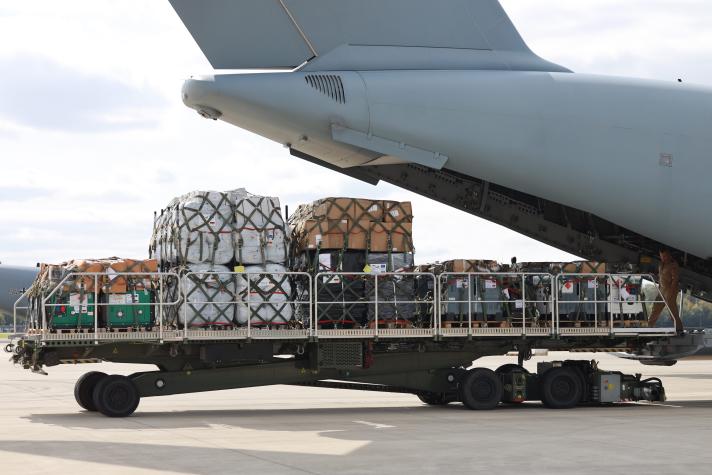
Plane loading with aid supplies offered by Germany. The cargo included crucial shelter items such as tents, blankets, field beds and mattresses as well as generators and water filters to help displaced people in the aftermath of the disaster.
© German Federal Agency for Technical Relief
As needs dramatically increased, a few days later, the EU strengthened its support to people in the country. We released an additional €5.2 million in humanitarian funding, bringing the total to €5.7 million.
The funding is channelled through EU humanitarian partners active in the country, enabling them to strengthen assistance with a focus on shelter, health, food, water, sanitation and hygiene, and protection.
We continue monitoring the situation and stand ready to provide further assistance if needed.
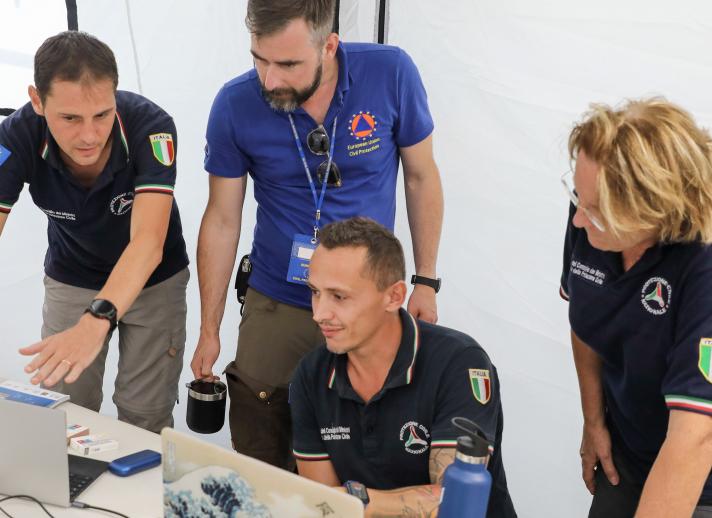
Civil Protection teams coordinating operations on the ground. In the wake of complex emergencies such as floods in Libya, coordination, fast assessment and support are of the essence to support operations.
© European Union 2023
